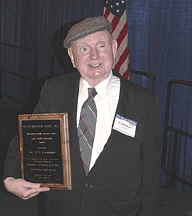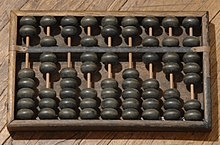Who Invented Abacus
Tim Cranmer is credited for a robust calculating machine abacus. Cranmer was blind, and he built an abacus to help himself and others like him to calculate. Blind people still use his abacus for calculations. History of AbacusThe abacus, one of the first counting machines to be invented, dates back to 300-500 B.C. Following is the timeline showing how the abacus was evolved and used over the years -
MesopotamianMesopotamian or Sumerian is one of the oldest human civilizations. The people of Sumerian civilization used the first abacus for counting. The old Babylonian scholars used their sexagesimal system in the abacus for mathematical functions like addition and subtraction. GreekAbacus was popularly used in Greek in around 5th century BC. Greek used wooden or marble framed abacus with small metal pieces to count. A 300 BC old is one of the oldest counting boards used in Greek. It is constructed using marble, and its size is 149*75*4.5 cm. It consists of 5 parallel lines marked, which were divided by a vertical line. It had another set of 11 lines cut by a perpendicular vertical line. These two sets were divided by a horizontal crack. This abacus came to be known as the Salamis Tablet as it was discovered on Salamis Island. ChineseSuanpan, meaning calculating tray, is the first Chinese abacus. Beads are oval and are used for calculations on the wooden tray-like surface. The first part had two beads in each rod, and the other had five beads in one rod. Chinese abacus had oval beads during the Han dynasty, which later changed to follow the 2:5 ratio during the Ming dynasty. RomanRoman abacus had smooth tables with pebbles as the counters, which Pope Sylvester later modified. Wire and beads have prominently used an abacus instead of boards.The Roman abacus was rebuilt in the 1st century, and it consists of two types of grooves. First was the long groove had five beads in each of the eight grooves. Another was short grooves with one or no bead in each one of the eight grooves. JapaneseSoroban is the name of a Japanese abacus. It was imported in the 14th century, from China but it had two decks. The upper had one bead, and the lower had four beads. These diamond-shaped beads had five on the top deck and value one on the bottom deck. RussianSchoty is a Russian abacus with ten beads in each wire except four beads in one wire. It has a single deck with a different color of the 5th and 6th bead and is used vertically from left to right. IndianAbhidharmakoshavasya is a popular book by Vasubandhu, who was a philosopher and a Buddhist scholar. This book shows how the abacus was used in ancient India, and the usage of zero is also mentioned in this book. Existence of AbacusToday, counting without numbers seems impossible, but in ancient times when numbers weren't discovered, people found different ways to calculate, one of which was using fingers. As the time passed,counting more than ten things or many things altogether became tricky using fingers. Hence people started using stones, shells, etc. While trading, merchants needed a reliable counting device to keep track of the goods which led to the invention of various ways; the abacus was one of these. Abacus was then used to calculate large numbers and was also adapted in the Hindu-Arabic number system for counting the place value. Later, abaci evolved into calculators, side rules, electronic calculators, and nowadays wide used smartphone calculators. 
Abacus in present timeToday, the abacus is used as a tool to teach students multiplication and place values. Asian countries like Japan and China still use them predominantly. Abacus is an essential tool that allows the development of children. It helps them learn coordination of hands and brain, improves concentration, and helps them get over the fear of numbers. It also helps boost memory, increase speed and achieve accuracy while calculating. Abacus is a fundamental and systematic way to learn calculating, and it develops photographic memory in children. Because of the tremendous benefits of an abacus, this age-old technique is still used to help students learn efficiently.
Next TopicWho Invented Air Conditioning
|
 For Videos Join Our Youtube Channel: Join Now
For Videos Join Our Youtube Channel: Join Now
Feedback
- Send your Feedback to [email protected]
Help Others, Please Share










